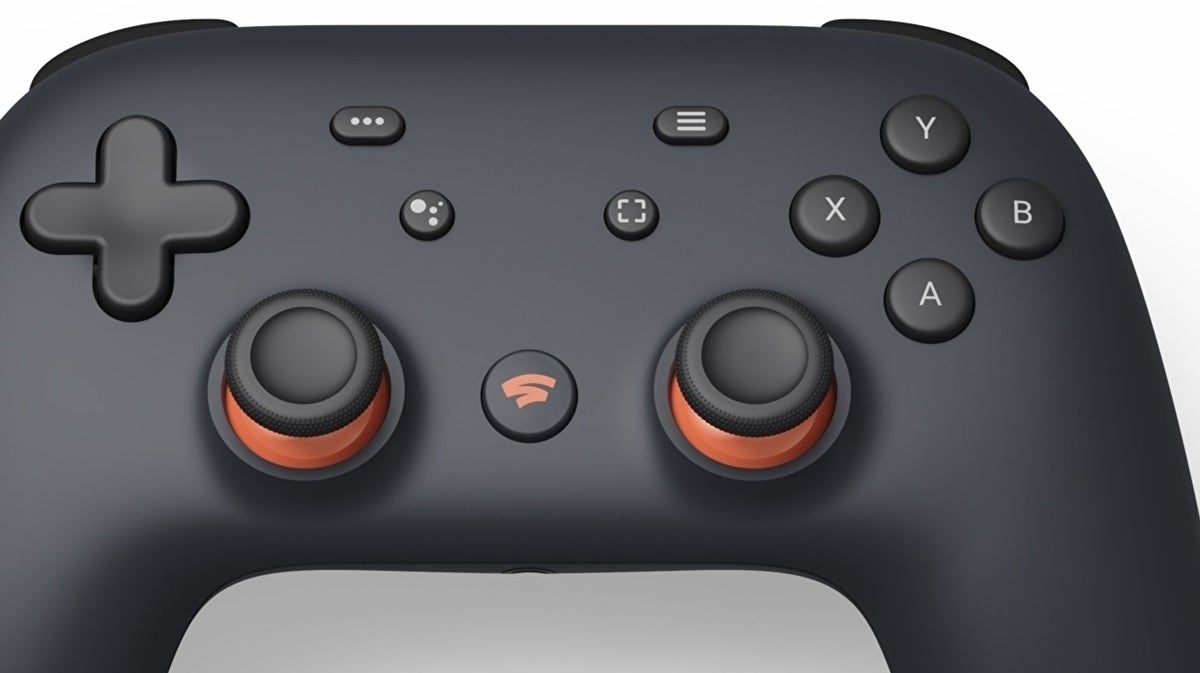Outside the hall, in an ominous show of forbearance as well as an example of how ill-conceived some of Google’s ideas were, was assembled some of video game’s most famous failures, with four plinths displaying a Dreamcast, Nintendo’s Powerglove and Atari’s ET with the final display left empty with a simple ‘Coming Soon’ for the soon-to-be-announced Stadia. Amidst all the bluster that would follow, it was the one thing from that event that would ring true. It’s easy to be cynical about Stadia, and there was plenty of scepticism going around at the time of its reveal. Google’s track record with product launches is spotty at best, with a rich history of big ideas being introduced before being tossed aside out of apparent boredom. The level of investment with Stadia, though, was simply bonkers. Millions was paid out to secure big blockbusters like Assassin’s Creed Odyssey, Red Dead Redemption 2 and Cyberpunk 2077, while exclusives were secured from such talented studios as Q-Games, Splash Damage and Tequila Works. It felt, for a short while, that Google was taking this all very seriously - and how exciting it was to have a genuine new player in the game. And, most importantly, it worked! As proof of concept when Cyberpunk 2077 suffered through its infamous launch, with substandard performance on last-gen hardware, the prospect of getting hold of one of the new consoles next to impossible, Google Stadia was your best bet for an affordable experience. Here was a next-gen experience, made bespoke for Stadia (at no small cost, I’m sure) and streamed directly to you. The trouble was, Stadia was doomed well before then, thanks to a business model that ensured it arrived dead in the water. Charging full-price for games was, to put it politely, bizarre, and Stadia’s big issue was putting ownership prices on something that never really felt like ownership (something that’ll be sadly underlined when the plug’s pulled next January, with the likes of exclusive titles such as Pixeljunk Raiders, Gylt and Outcasters seemingly to be lost forever). The justification of that cost from Stadia chief Phil Harrison rang hollow from the off, ensuring its fate was sealed before it ever hit the market and making yesterday’s news of it folding - seeing it join Google’s ever-growing pile of abandoned projects - inevitable. And yet, despite this, streaming still feels like an inevitable part of gaming’s future - but if Google, with all its might and millions, can’t make a streaming service take off then who exactly can? Perhaps part of the problem was Google expecting everyone to make the switch to an all-new ecosystem, when shifts in gaming habits are never quite so stark. Just as we’ve all slowly moved away from physical to digital media, the path to success for streaming is surely making it part of a wider ecosystem. Xbox has the perfect solution in place, of course, by adding streaming to an existing subscription and giving it as an option people can try without any extra fuss or cost, on their own terms, and with GamePass you’re part of something much richer that makes it feel like it’s not going to disappear. When - and I’m sure it’s when rather than if - streaming finally goes mainstream I wonder how we’ll feel about Stadia. It was doomed by some poor choices and dwindling support from Google, but like those curious pioneers such as Sega’s Dreamcast and Nintendo’s powerglove it lined up alongside at GDC all those years ago it offered a small, flawed glimpse of a future, even if it was a future that wasn’t yet to be.
